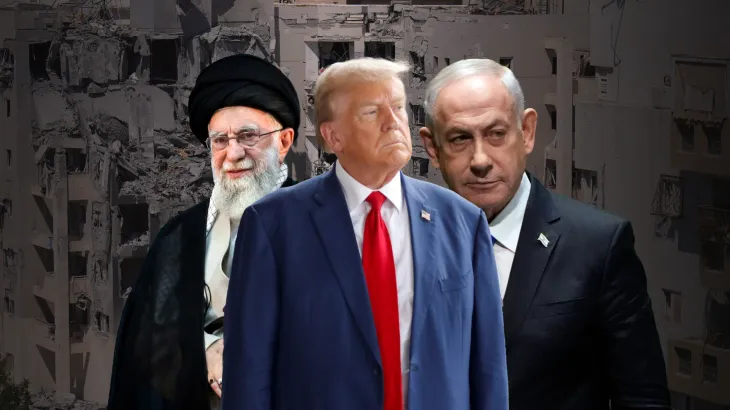
Understanding the Dynamics of the Israel-Iran Conflict
The geopolitical landscape of the Middle East is complex and multi-layered, with various actors and interests intersecting in often volatile ways. In 2025, the conflict between Israel and Iran remains a pivotal source of instability in the region. As tensions continue to rise, the impact of this animosity stretches far beyond the borders of each respective nation, affecting economic, political, and social dimensions throughout the Middle East.
Historical Context of the Conflict
Understanding the origins and history of the Israel-Iran conflict is essential to grasp its current implications. The animosity between the two nations traces back to the Islamic Revolution in 1979, when Iran’s new leadership adopted a staunchly anti-Israel stance. This ideological shift, compounded by Israel’s strategic alliances with Western states, has fueled decades of hostility.
- 1979 Islamic Revolution: This marked the beginning of Iran’s opposition to Israel, replacing the previously amicable ties under the Shah with a more confrontational approach.
- Proxy Conflicts: Both nations have been engaged in indirect confrontation through various proxy groups, exacerbating regional instability.
Key Incidents in Recent Years
In recent years, several specific incidents have contributed to the escalation of tensions:
- Nuclear Program Developments: Iran’s nuclear ambitions have been a primary concern for Israel, which perceives an existential threat.
- Military Engagements: The exchange of missile strikes and military skirmishes has heightened the risk of a large-scale conflict.
- International Sanctions: Economic measures imposed by various countries have further strained relations and affected regional trade.
The Impact on Middle East Stability
The ongoing conflict between Israel and Iran has profound implications for the stability of the entire Middle East region. These effects can be observed through several key areas:
Economic Disruptions
The antagonism between these two powers has led to significant economic disruptions. In particular:
- Trade Barriers: Increased tensions have led to tighter trade restrictions, affecting regional economies that rely on the free flow of goods.
- Oil Market Volatility: As major oil producers, fluctuations in the conflict can lead to significant changes in global oil prices, impacting economies worldwide.
Political Alliances and Realignments
The conflict has also prompted realignments within international alliances, altering the geopolitical map:
- Gulf States’ Response: Many Gulf countries find themselves navigating a delicate balance, occasionally acting as mediators or siding with one of the conflicting parties.
- Western Involvement: The involvement of Western nations, particularly the United States, influences regional dynamics, often leading to further polarization.
Impact on Civilian Populations
The most immediate impact of the Israel-Iran conflict is felt by civilian populations, who face the brunt of humanitarian crises:
- Refugee Movements: As violence escalates, displacement increases, leading to humanitarian challenges across the region.
- Civil Unrest: Internal unrest within countries aligned with either Israel or Iran often spills over, leading to domestic instability.
Potential Paths Forward
Addressing the Israel-Iran conflict requires a multifaceted approach involving comprehensive peace initiatives and strategic diplomacy:
Dialogue and Diplomacy
Efforts to bring about a resolution could include:
- International Mediation: Third-party nations or organizations might facilitate dialogue between Israel and Iran to de-escalate tensions.
- Regional Cooperation: Encouraging neighboring countries to engage in diplomatic efforts can lay the groundwork for broader peace and cooperation.
Strengthening Economic Ties
Economic collaboration between Israel, Iran, and other regional players could serve as a stabilizing force. Initiatives might involve:
- Trade Agreements: Fostering economic interdependence can create shared interests in maintaining peace.
- Infrastructure Projects: Joint development projects can promote cooperation and mutual benefits.
Humanitarian Aid and Support
Providing aid to affected regions can help mitigate the conflict’s impact on civilians:
- Refugee Assistance: International support for displaced populations helps address immediate needs and fosters regional stability.
- Reconstruction Efforts: Investing in rebuilding war-torn areas contributes to long-term recovery and peace.
Conclusion: A Path to Peace?
The Israel-Iran conflict continues to pose significant challenges to Middle East stability in 2025. However, through strategic diplomacy, economic collaboration, and humanitarian efforts, there remains hope for a resolution. Long-term peace will require sustained commitment and innovation in conflict resolution strategies from the global community.
Ultimately, achieving a durable peace depends on the willingness of both nations and their allies to compromise and engage constructively. By prioritizing dialogue and cooperation, the Middle East can look towards a more stable and harmonious future.
